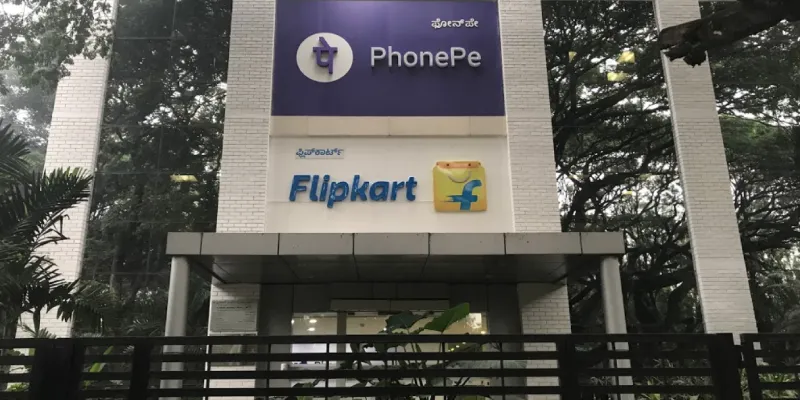NPCI ban on same account UPI transactions will stop big payment cos from inflating numbers: PhonePe
NPCI's latest circular to banks, blocking transactions in which the payer and payee accounts are the same from August 1, has sparked a debate around incentivisation of payment systems in India.
In a recent circular to banks, National Payments Corporation of India (NPCI) had stated that transactions where the source and destination of the UPI payment is the same bank account will be blocked starting August 1.
Bengaluru-based payments company PhonePe has supported this circular, stating that this will ensure that transactions are not artificially inflated by payment companies.
While speaking to YourStory, Hemant Gala, Head of Payments, Banking and Financial Services at PhonePe, said,
“We are glad to see that NPCI has introduced this rule. It is a positive sign and will ensure that people don't abuse the UPI network just to inflate their transaction counts. PhonePe highlighted this issue months ago. Yet certain players continued incentivising these shell transactions, where the sender and receiver is the same.”

Experts in the payment industry have stated that consumers, in order to benefit from various incentivisation schemes from third-party apps, game the system by creating multiple VPAs on different payment apps with the same underlying bank account.
With the money being debited and then credited to the same account through two different VPAs, customers get cashbacks for performing transactions.
However, in the past, players like Paytm and Google Tez have been accused by other payment players of using this method to inflate transactions.
In March, PhonePe had openly accused Paytm of artificially inflating numbers in its blog 'All that glitters is not gold’.
It had stated, “… 21 million transactions out of Paytm’s total 68 million transactions (in February) were money transfers made by Paytm customers sending money to PhonePe customers (with a @YBL VPA handle). So, we decided to try and find some answers about their ATV, ATPC etc.”
Based on its calculations PhonePe had further stated that only 40,000 unique consumers did 500-plus transactions each in February on Paytm.
With respect to the current development, Hemant added,
“If you see, we have been wanting to ensure that there is a healthy growth in UPI transactions. It has to lead to genuine used cases opening up. From an industry perspective, due to shell transactions like these, the infrastructure gets choked from this surge in transactions.”
PhonePe had raised this concern in the past with its partner bank YES Bank. Simultaneously, Payments Council of India, which is a consortium of private payment players in the country, recognised the issue and raised the concern with NPCI.
A source close to the matter said this concern and circular came from the NPCI's risk department. The fact that NPCI has given 10 days to implement this means that they have put other projects aside to address this concern.
The same source said,
“So basically, small transactions (like Re 1) were the major issue. Some banks have highlighted that networks are getting choked, with multiple VPAs being created. This leads to the inference regarding how many transactions on the UPI network are real. In the short term we might see a blip in the total number of UPI transactions on the network.”
YourStory reached out to Paytm and multiple other players in the industry who refused to comment on the story.
While speaking on the development, Akash Gehani, Co-founder of Instamojo, offered a different perspective, “On the infrastructure end, choking should not be an excuse considering that the payment network will have to scale for consumers as they start using UPI. Further, incentivisation is a sad reality of the Indian payment ecosystem. Incentivisation is one of the reasons why our payment ecosystem has grown so much over the past few years.”
Akash added,
“Personally, I don’t see there being a used case for anyone to send money to themselves. However, one should also learn that incentivising leads to a short-run impact and does not really mean stickiness in the long term. Yes, it does accelerate growth, but building better products around the network and expanding used cases will ensure growth.”
But this move by NPCI doesn’t affect the merchant ecosystem on UPI, since it is charged (for merchants). Akash said, “Merchants incur a charge for accepting UPI payments, although P2P (Peer-to-Peer) transactions are free on UPI. So, there is no incentive for them to accept these payments.”
Further, according to Akash, P2M (peer-to-merchant) payments on UPI continue to be less than 10 percent in the country.
In June, the total number of UPI transactions stood at 246.37 million, with a total of Rs 40,834 crore transacted through the payment system.This is a healthy 30 percent increase from the May numbers.
Paytm had claimed that it had processed close to 92 million transactions on its platform in June. PhonePe had announced that it saw close to 50 million transactions on its platform of a total payment value of Rs 10,000 crore, the same month.







